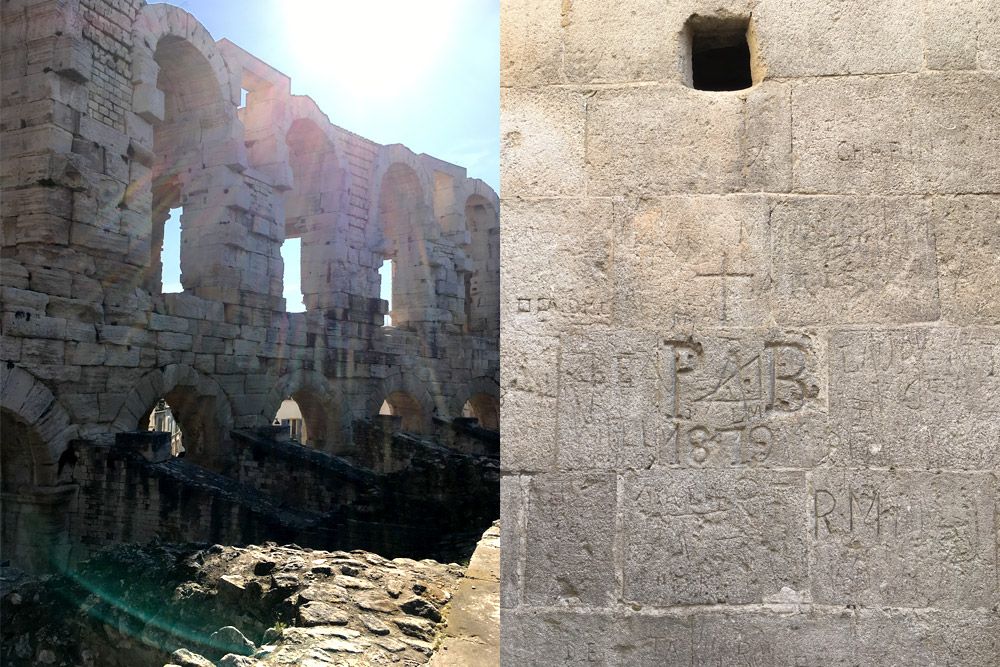
Antique graffiti adds another layer of history on monuments throughout Europe. Here, P.B. left his mark on the Roman arena at Arles in 1879.
It seems nothing is sacred: On the Honors Passport Pilgrimage trip honors history/anthropology major Elizabeth Cooper found graffiti carved into stately Romanesque cathedrals and the Roman arena at Arles. Instead of viewing these initials, names and dates as scars on a pristine past, Elizabeth sees them an invitation to imagine earlier adventurers along the Camino de Santiago.
Picture this: It’s 1879. You’re a recent Oxford graduate traveling in the south of France on your Grand Tour and have found yourself in Arles for the day. A Roman arena from the 1st century CE towers before you. Without a ticket purchase, guardrails, or entrance gates you explore the ruins, climbing all over the structure without a care for safety, stability, or historical preservation. Then, in one of the tallest remaining rooms, a blank wall catches your eye. This seems like the perfect spot to leave your mark on such an ancient place. So you decide to carve your initials (P.B.) and the year onto the wall. Others follow your example, and eventually the walls of the room are covered in the names, initials, and dates of a thousand different visitors to the arena over the years.
Graffiti is not usually condoned by modern laws or society. This is true of most public places, and is even more true of historic sites or monuments where graffiti is vehemently opposed on the grounds of preserving a site in its original condition. So what is it about graffiti from ages past that piques our interest? For me, “historical graffiti” is a window into the past of a historic place itself. Not only was a site used by those who originally built it, but people have continued to visit the place for many years, oftentimes for the same reasons I did. It opens a whole new world of intriguing questions—why did these people come to this place? What did they know of its history? How did they experience this place, and how was it different from how I experienced it? What was it like to visit a historic site as people of the past did?
Perhaps the “P.B. 1879” was carved by someone who was just passing through Arles, or maybe it was made by a local resident who passed by the Arles arena on a daily basis. Regardless of who made it, historical graffiti reveals something much older and deeper about human nature: the desire of humans to leave their mark on a place, to ensure that others remember them, that others know that they were here, or even that they once existed. In the case of historical graffiti, a visual, physical reminder in stone of the reality of past generations helps to make the people of the past more real to us, and allows us to connect with them on a more personal level. As a history and anthropology major, this personal connection (which can often be difficult to achieve just by reading texts) is invaluable, and the questions prompted by the phenomenon can provide countless avenues for research. While some may see historical graffiti as a detraction from the pristine nature of a site, I tend to view it as an interesting addition to the history of a place and to the broader history of our culture as a whole.
